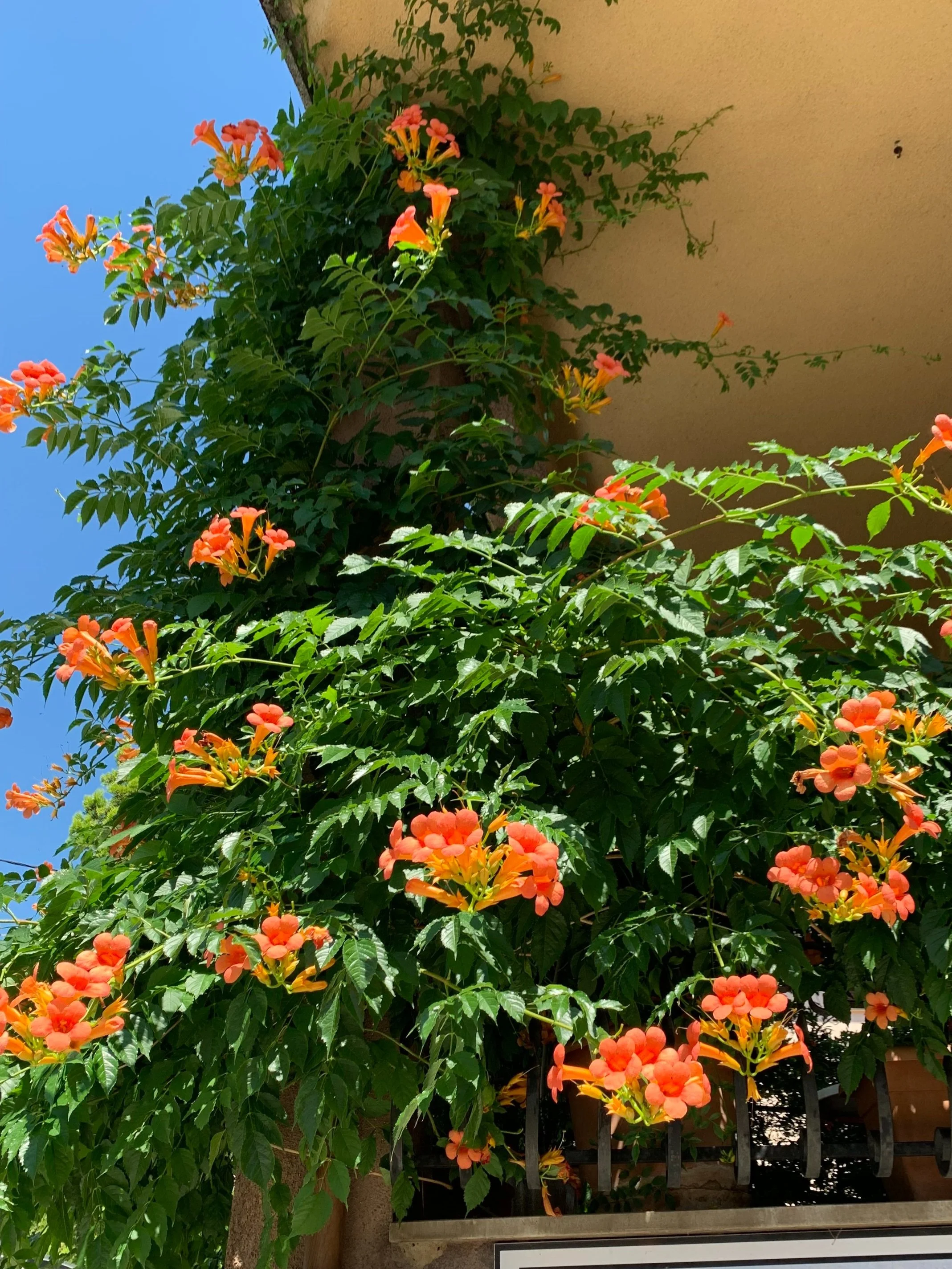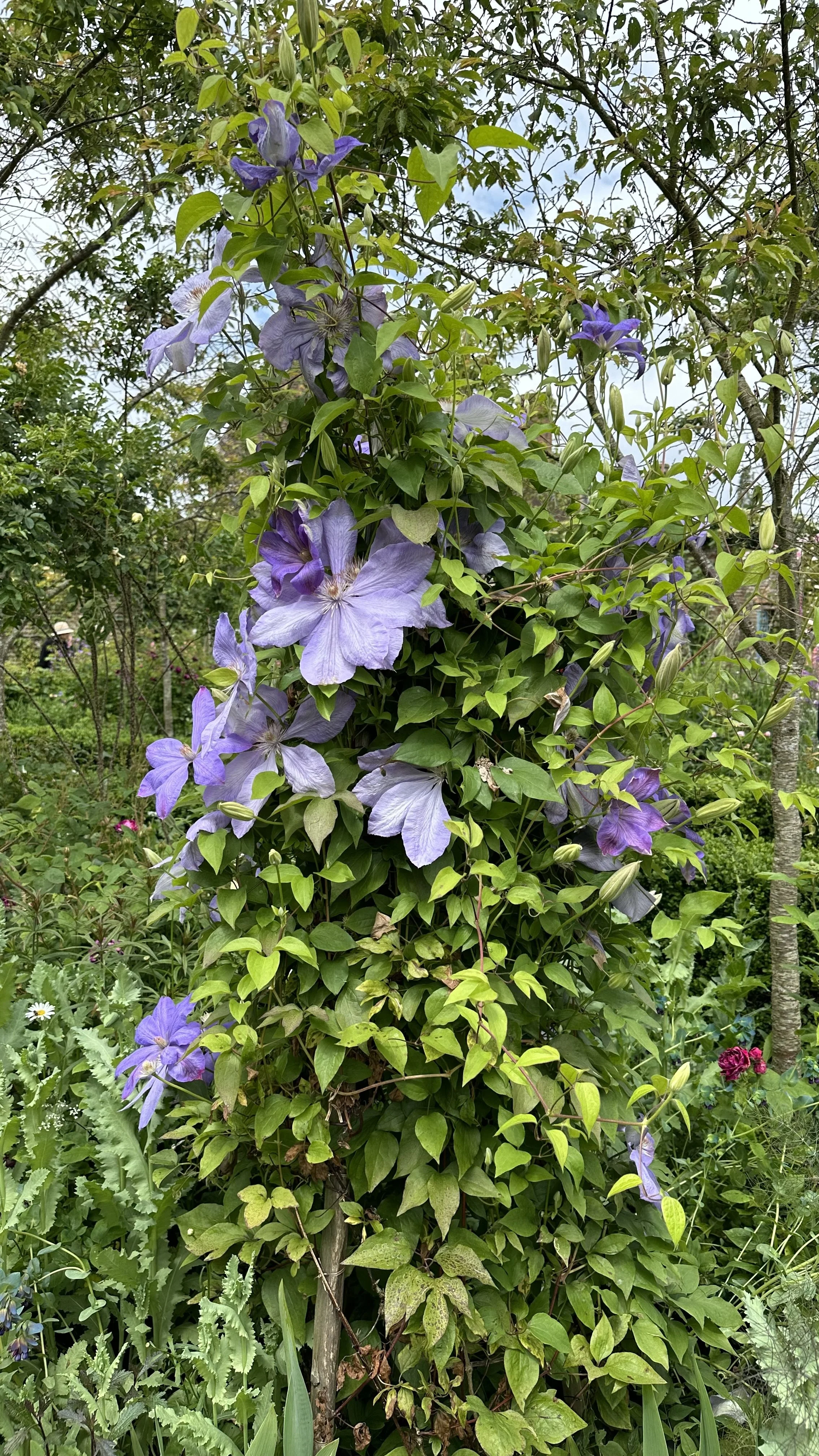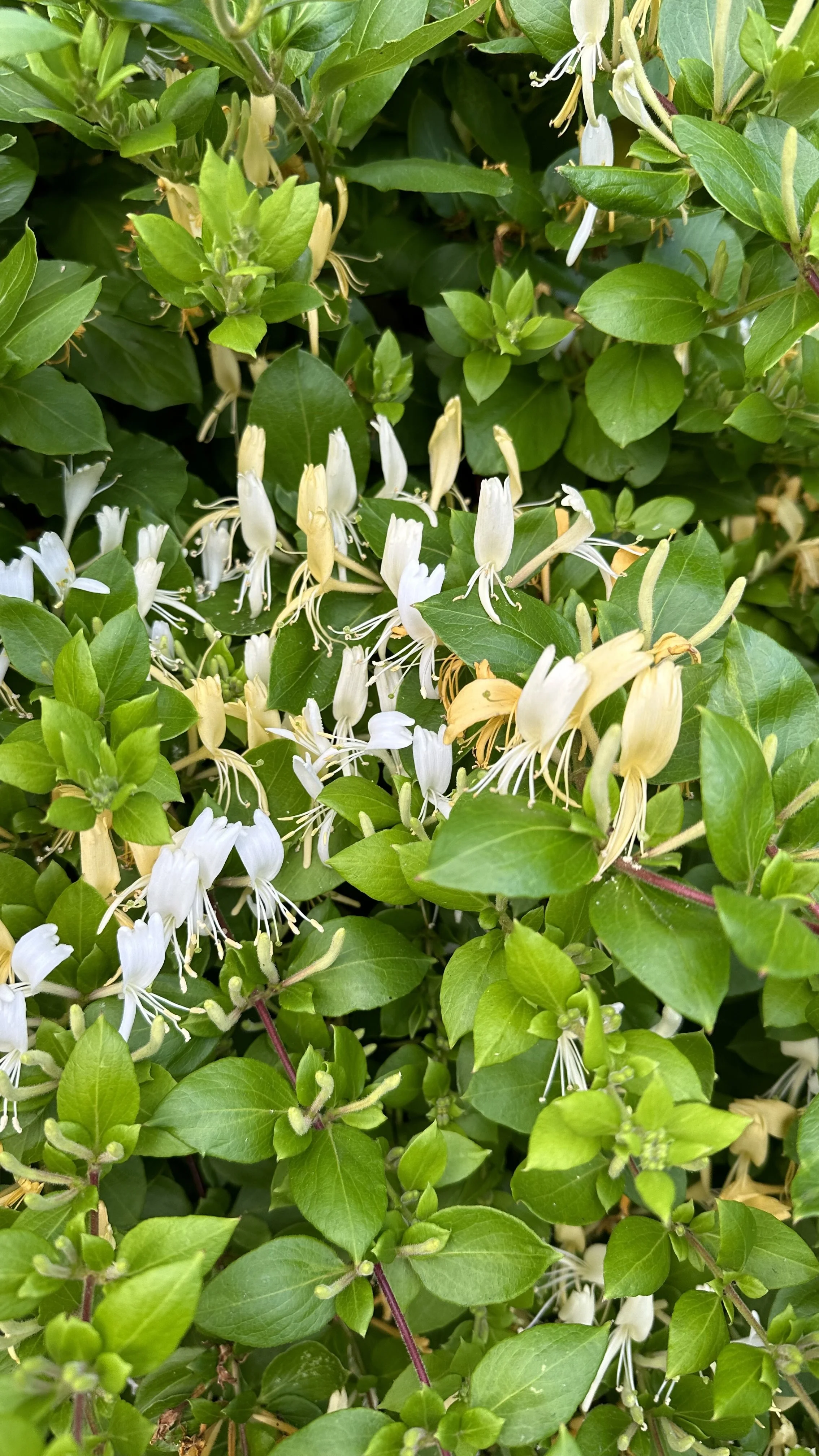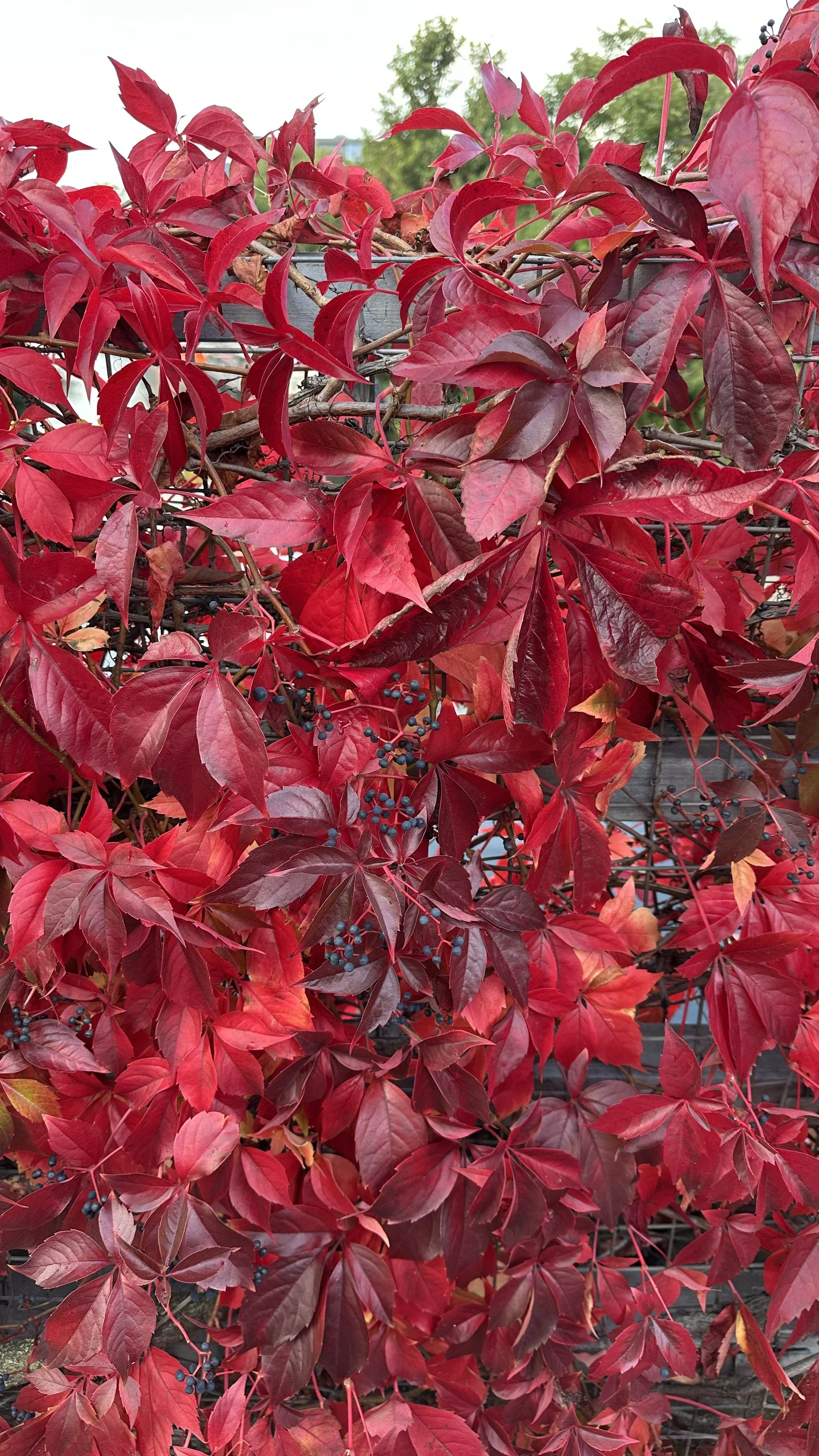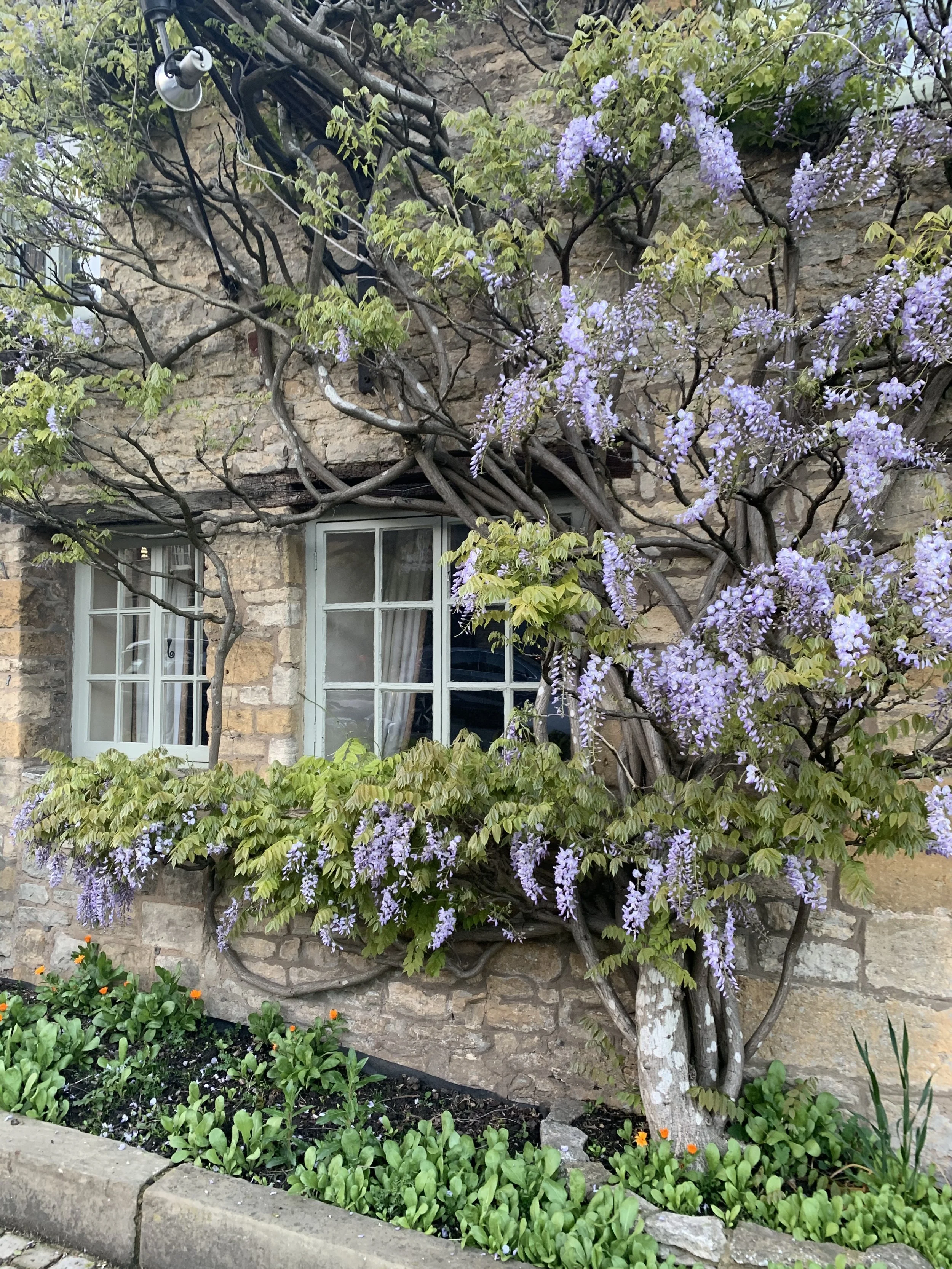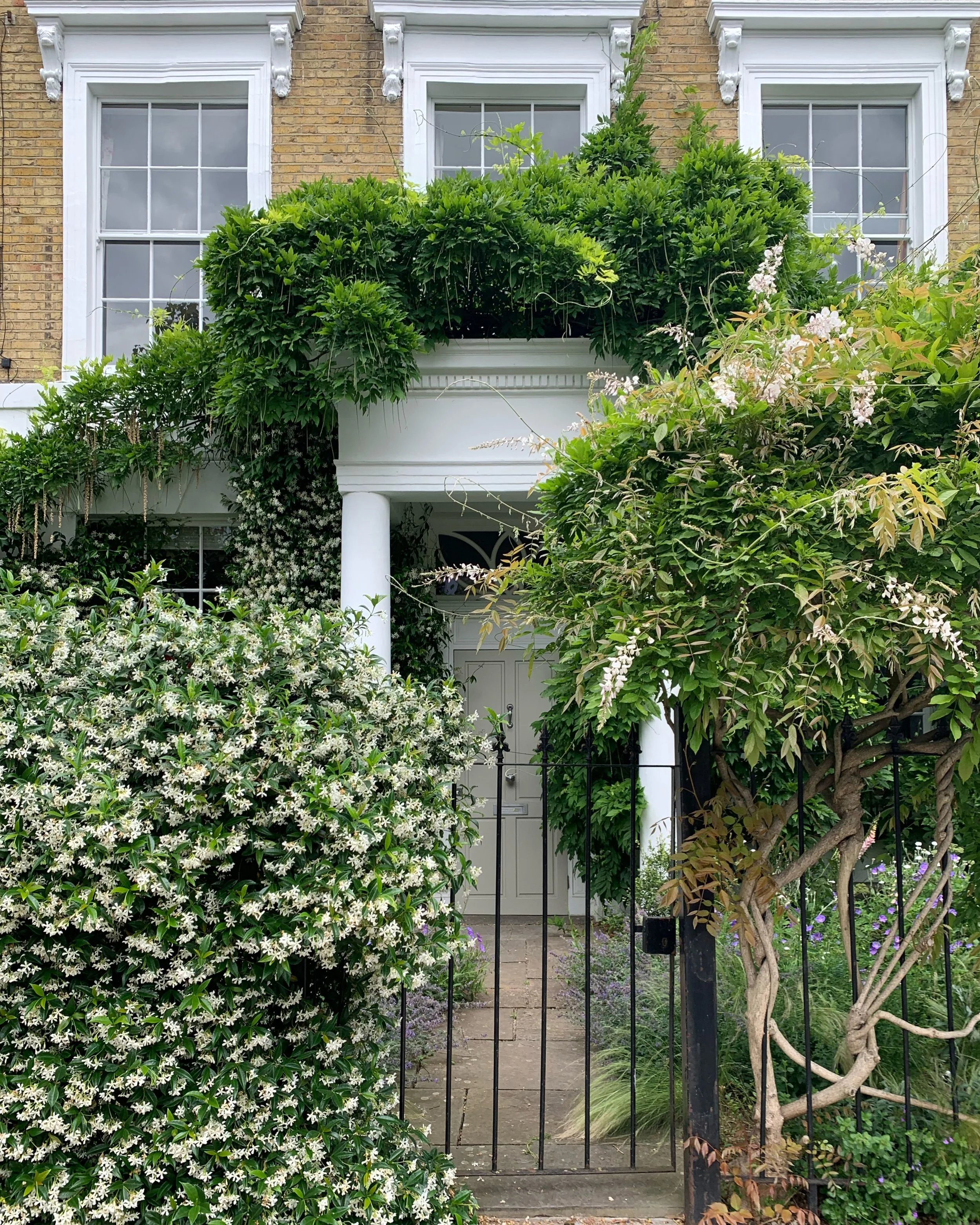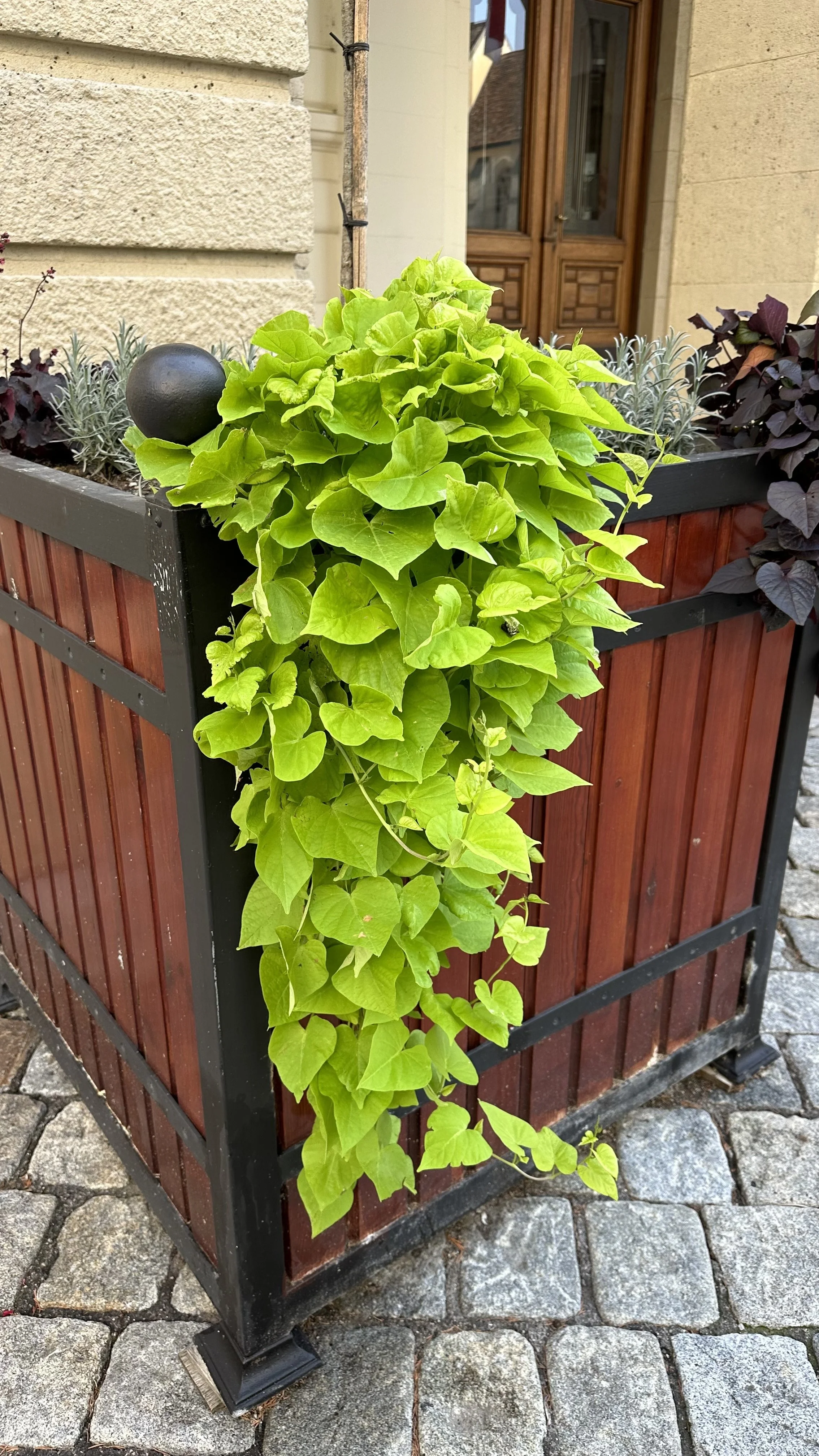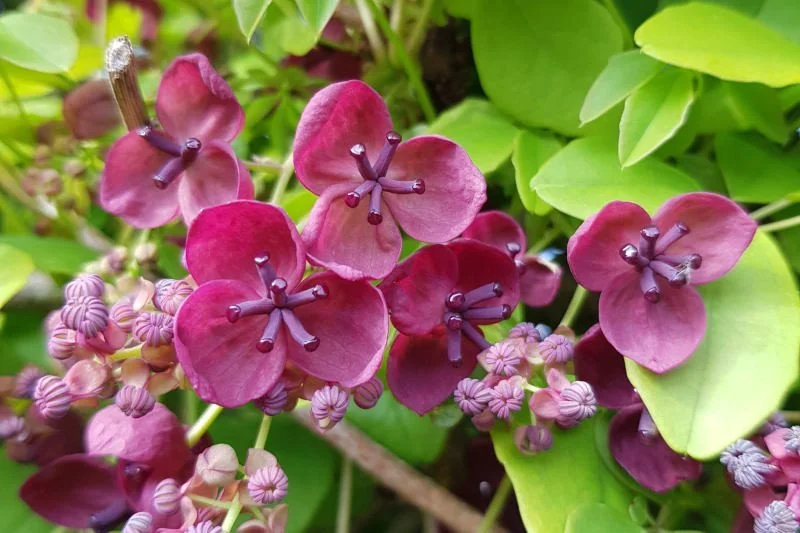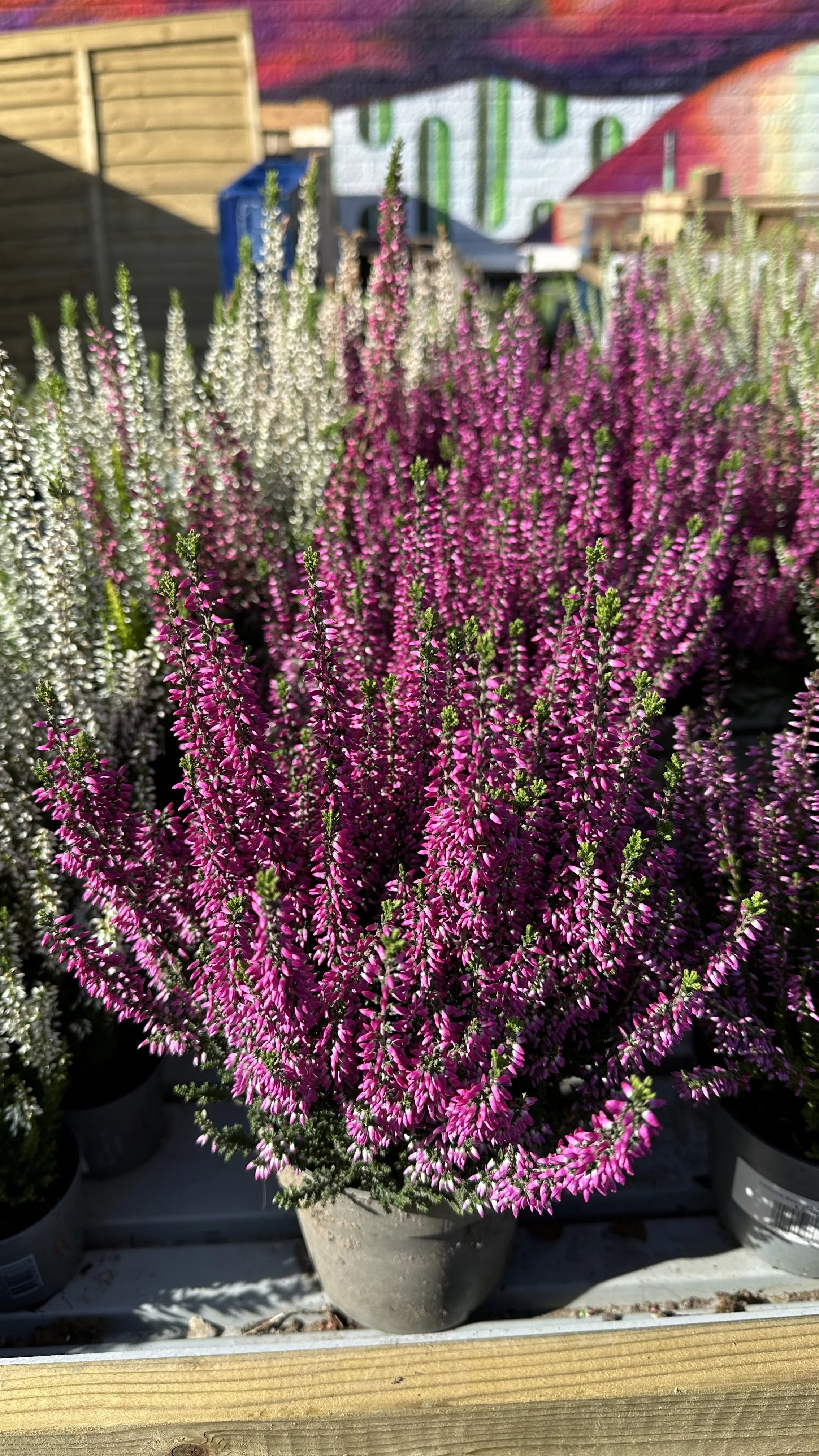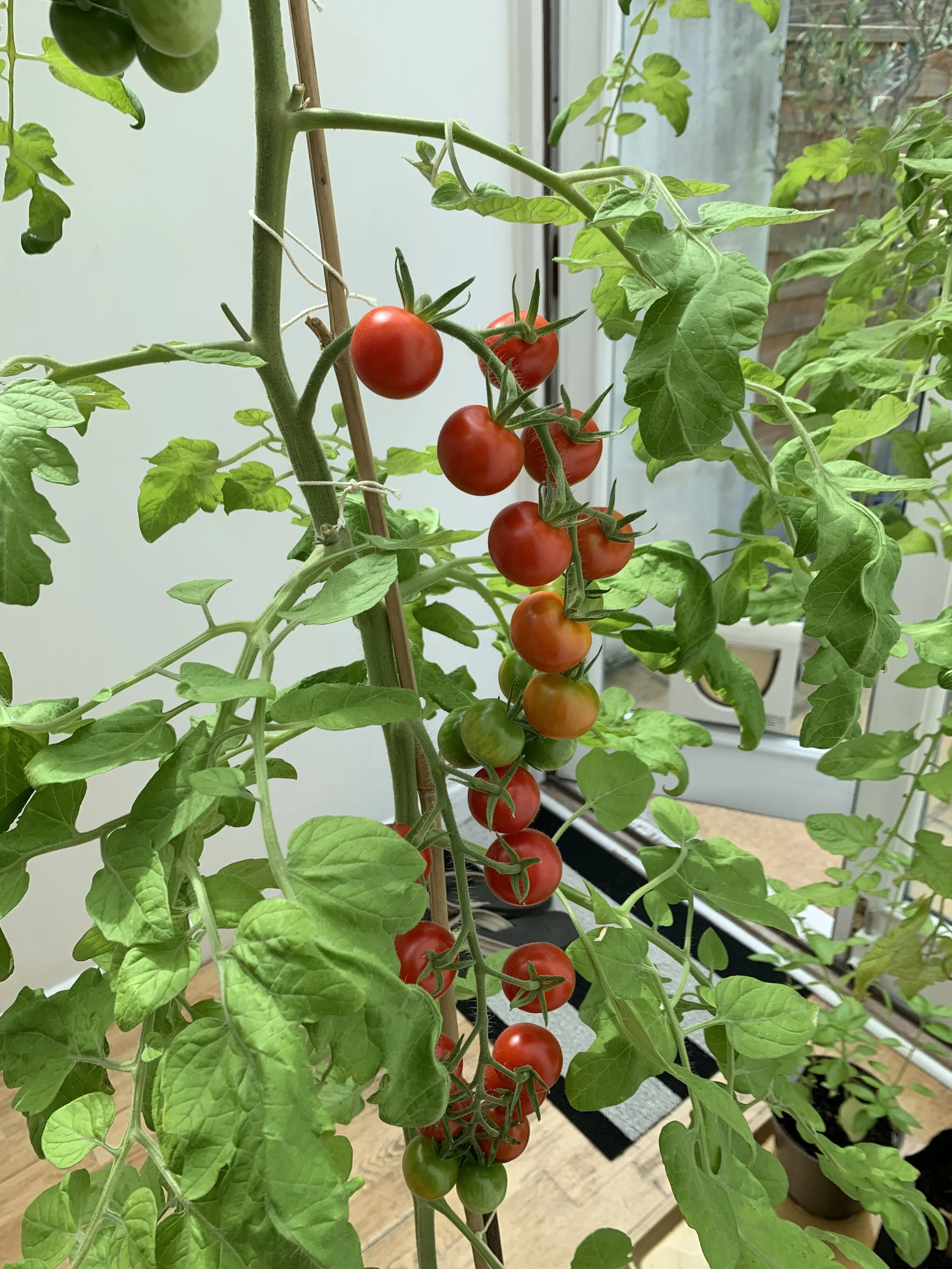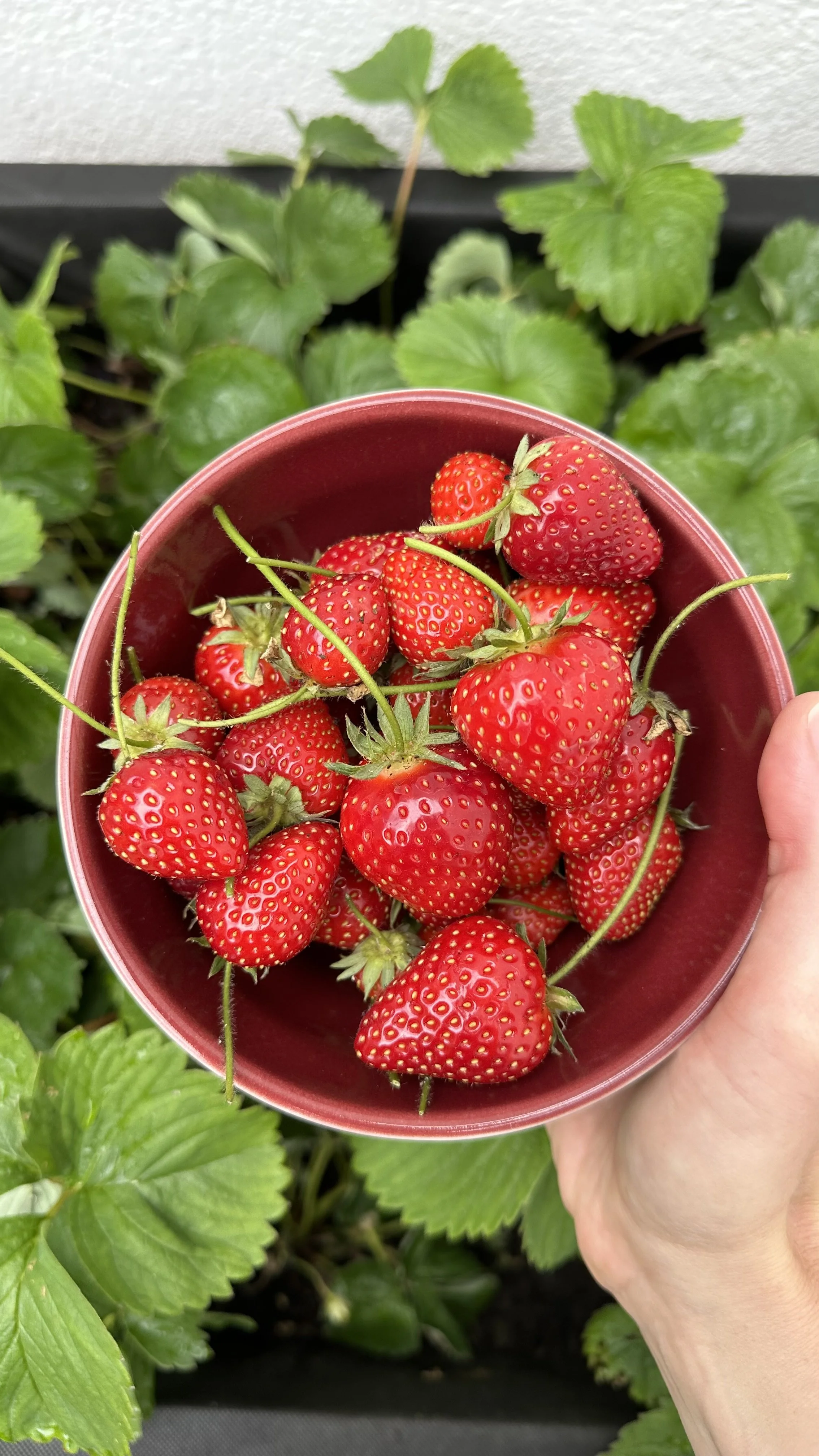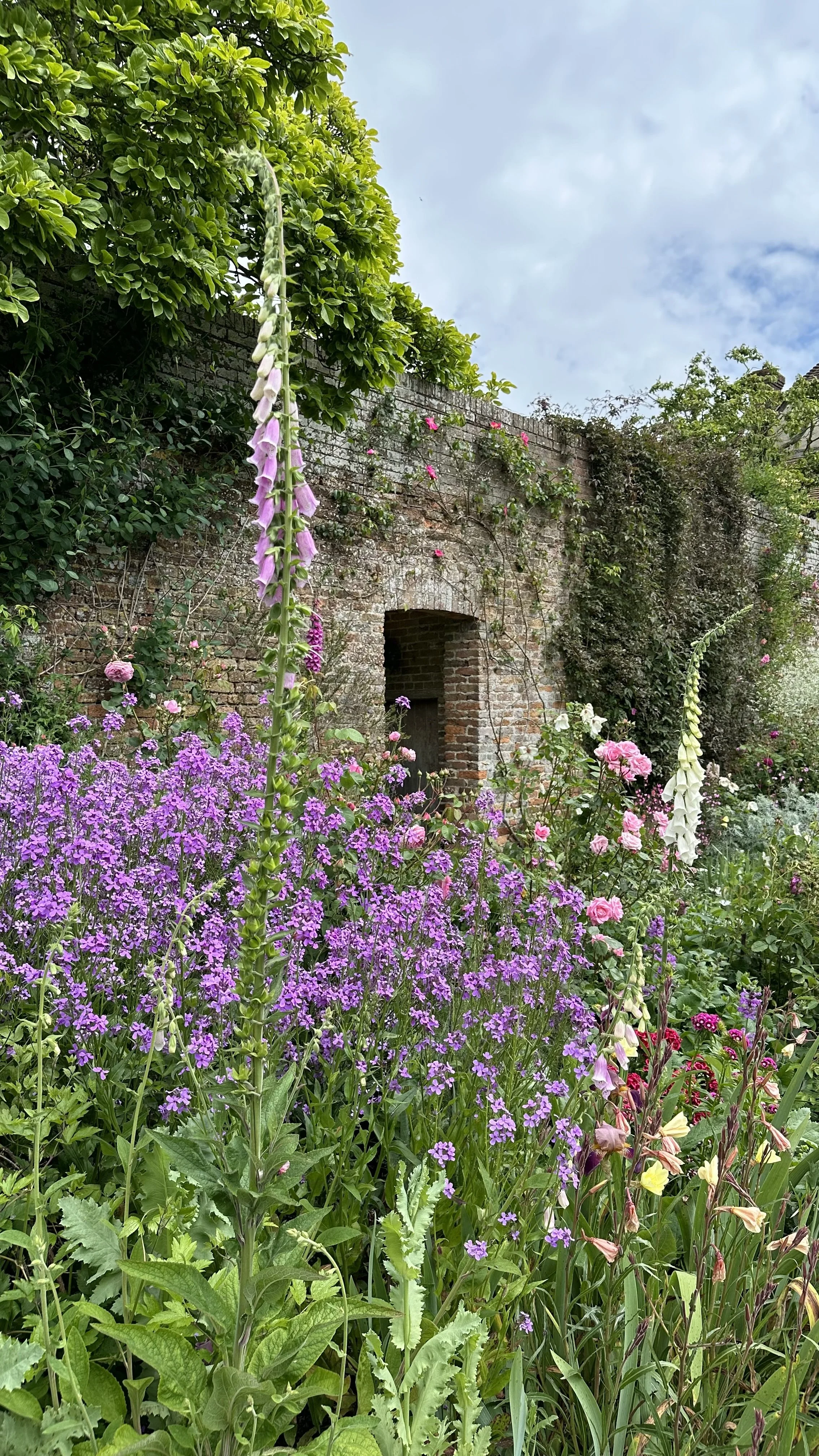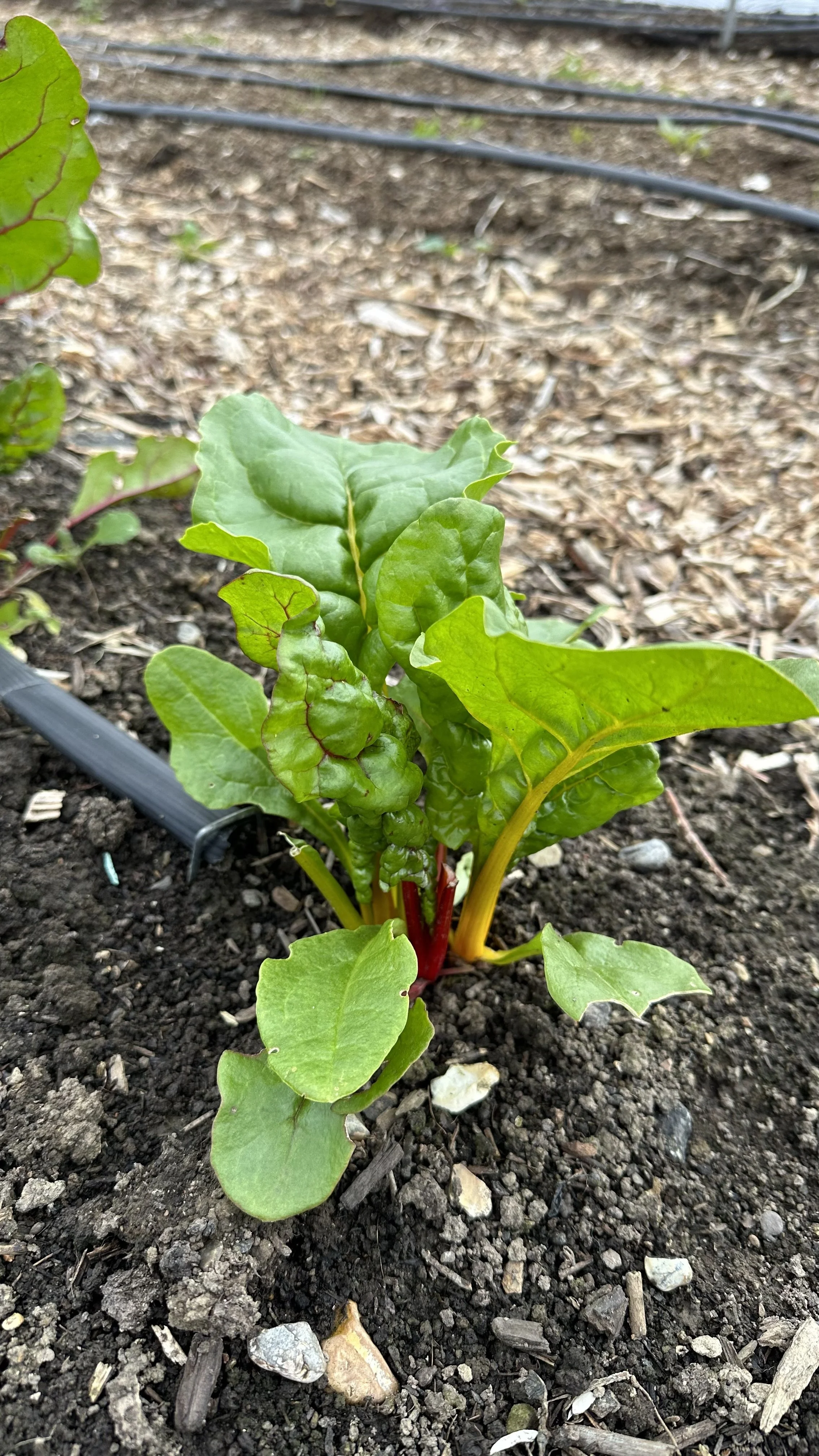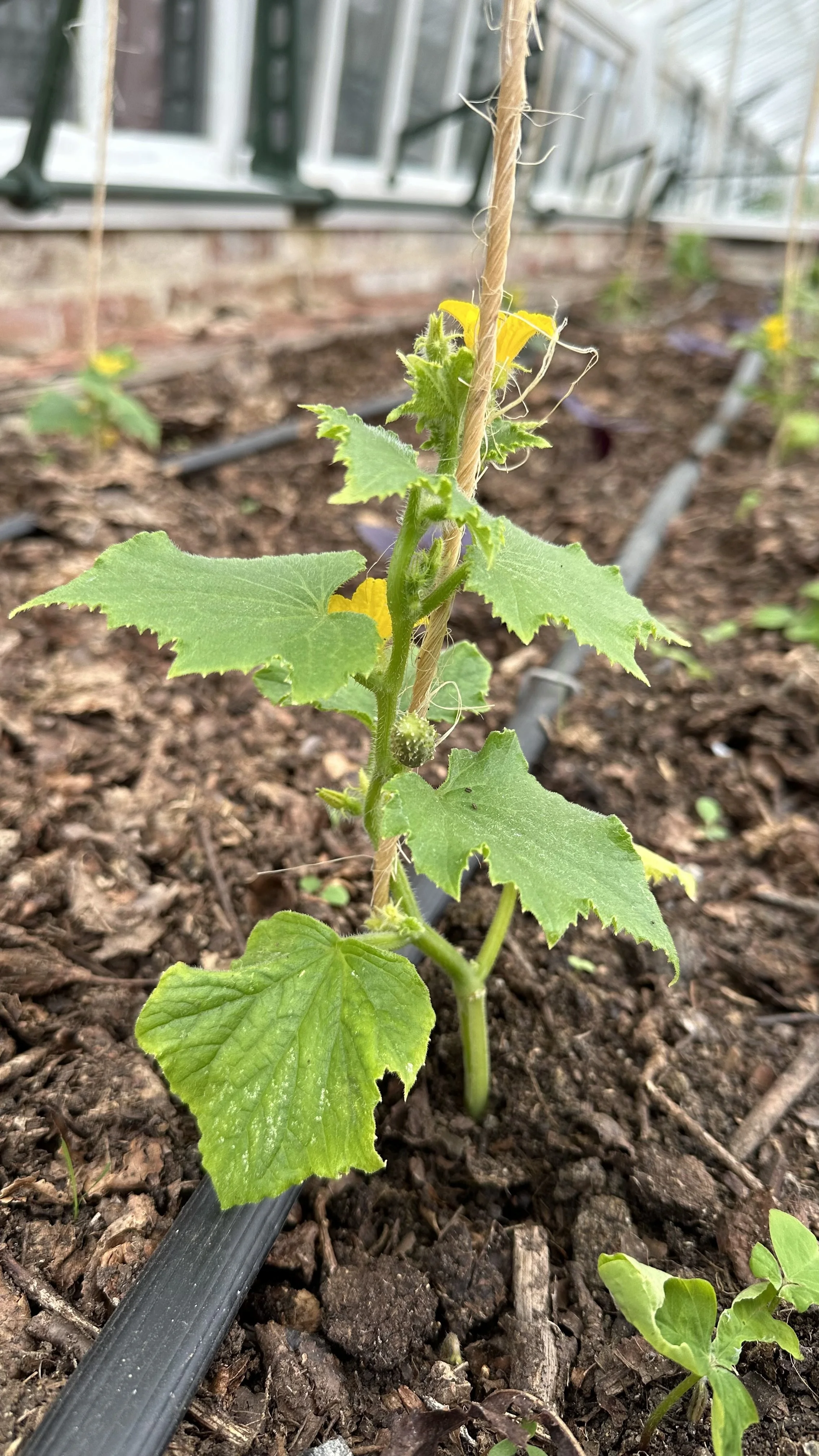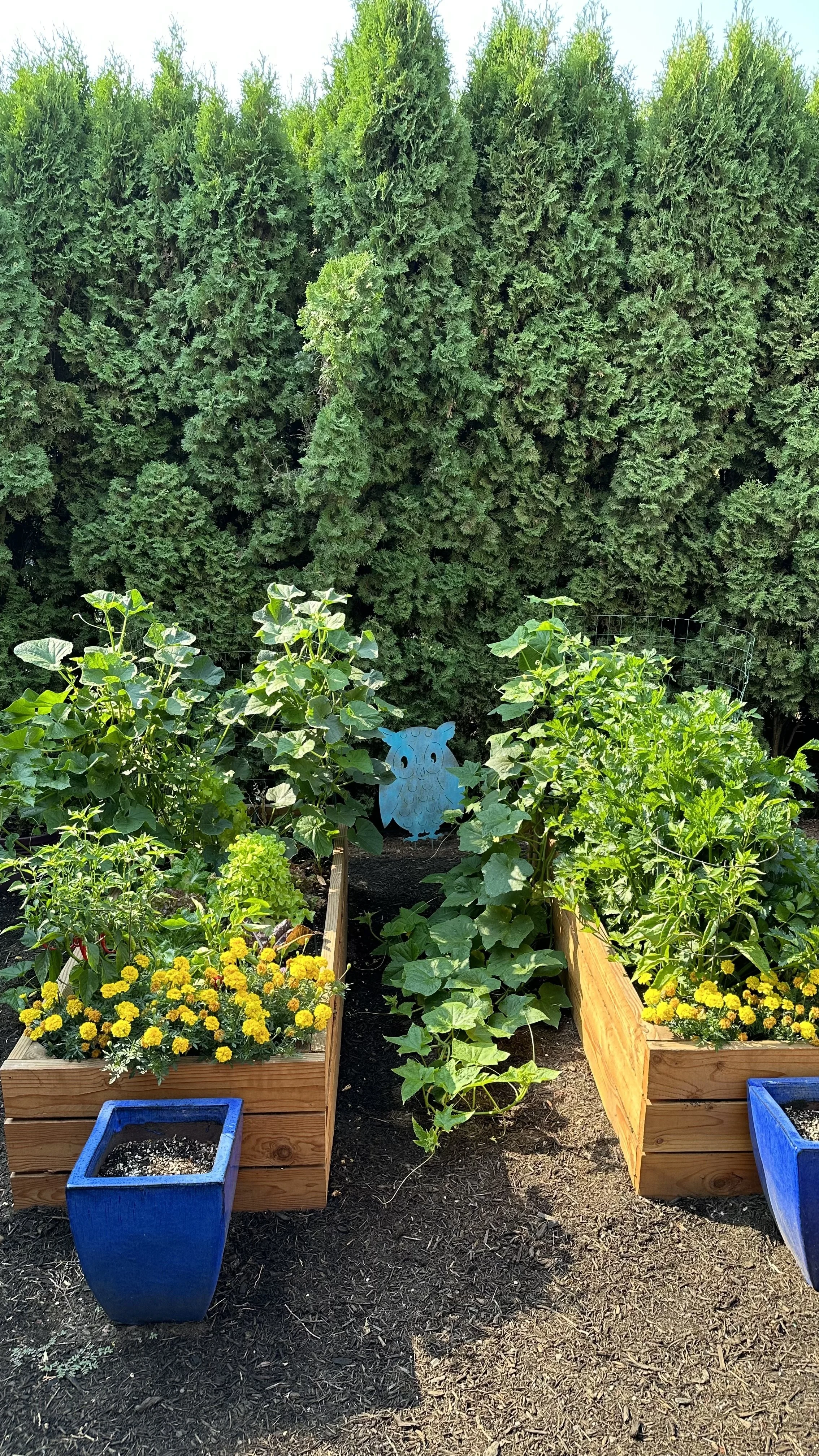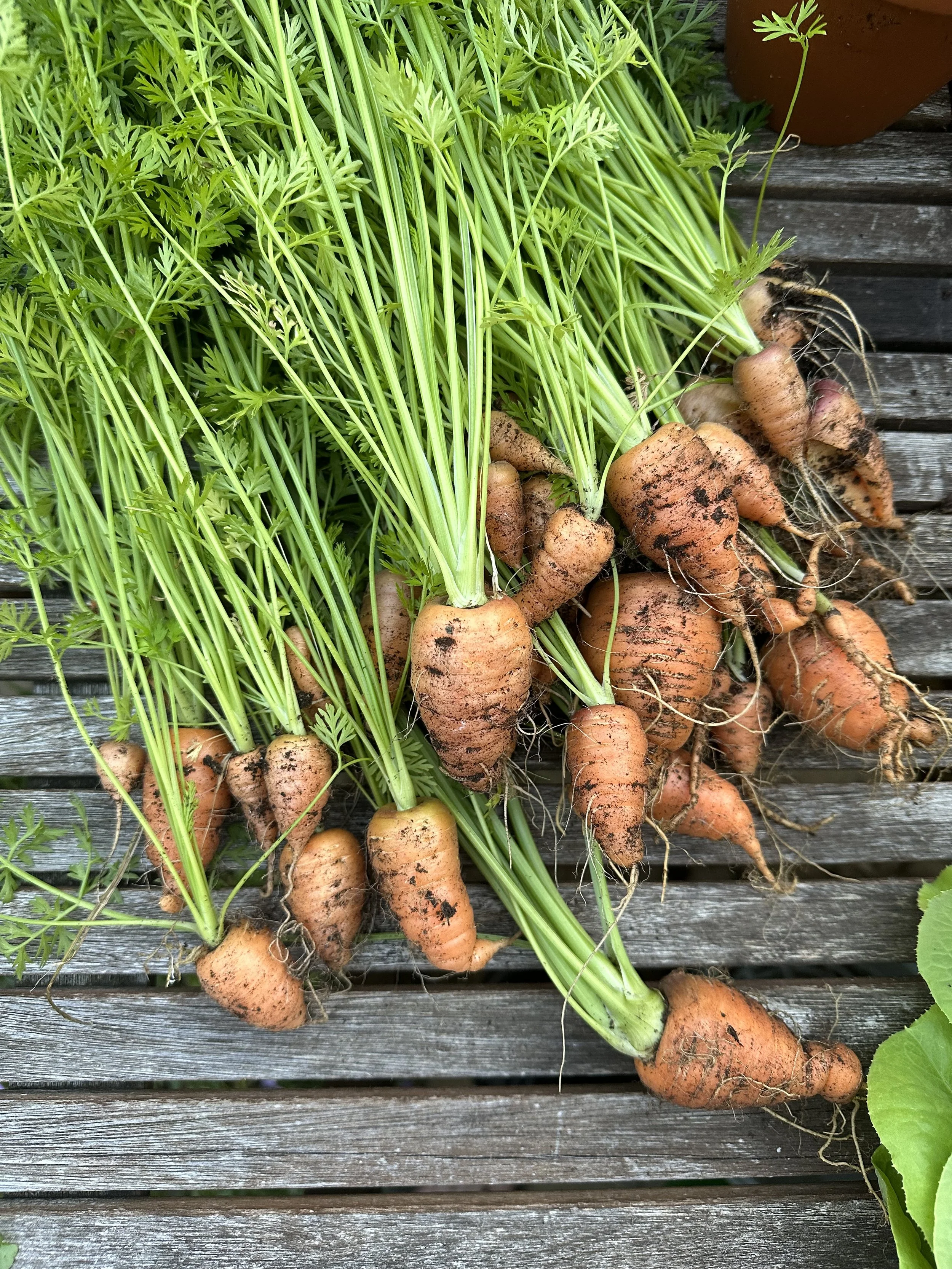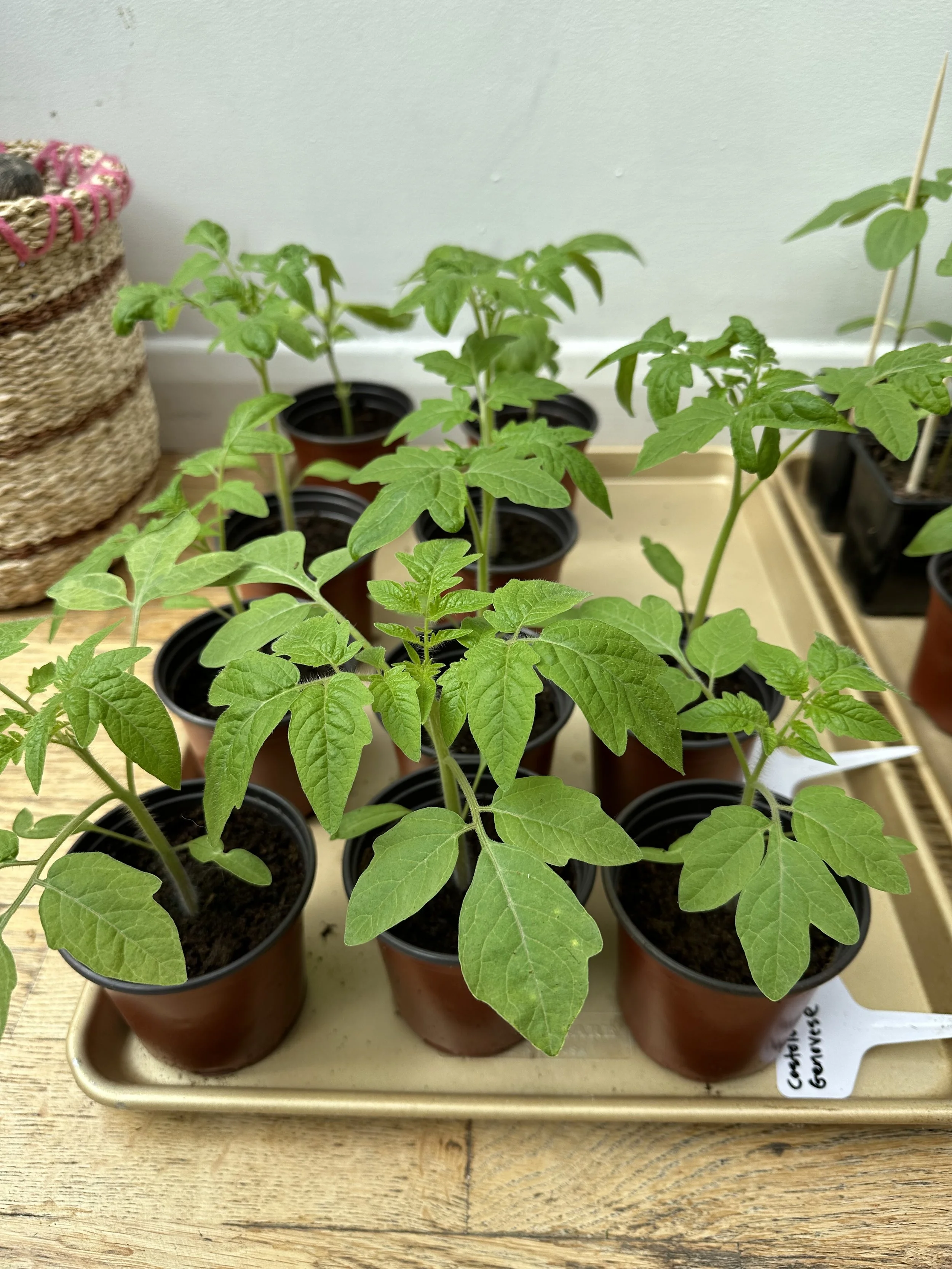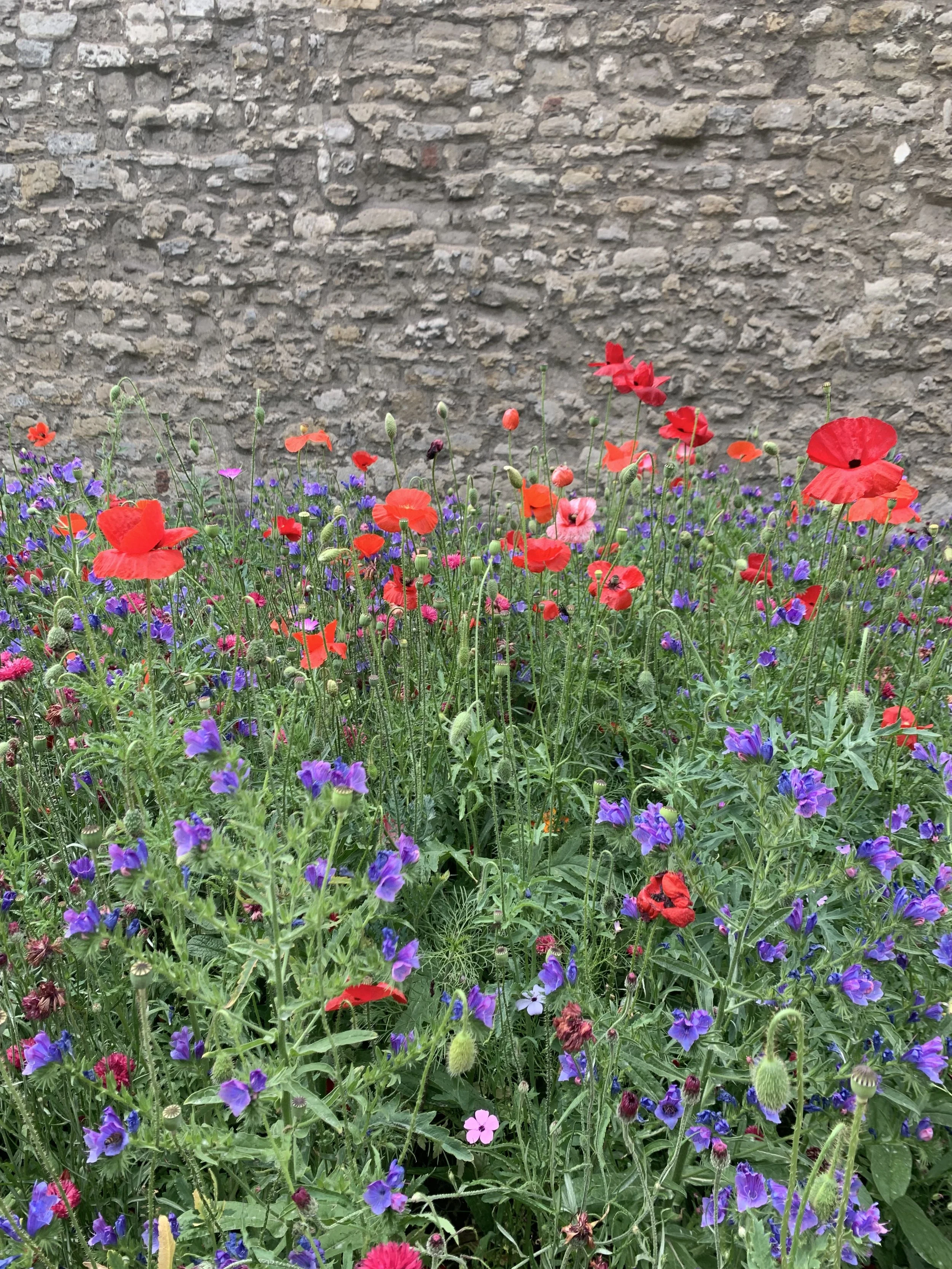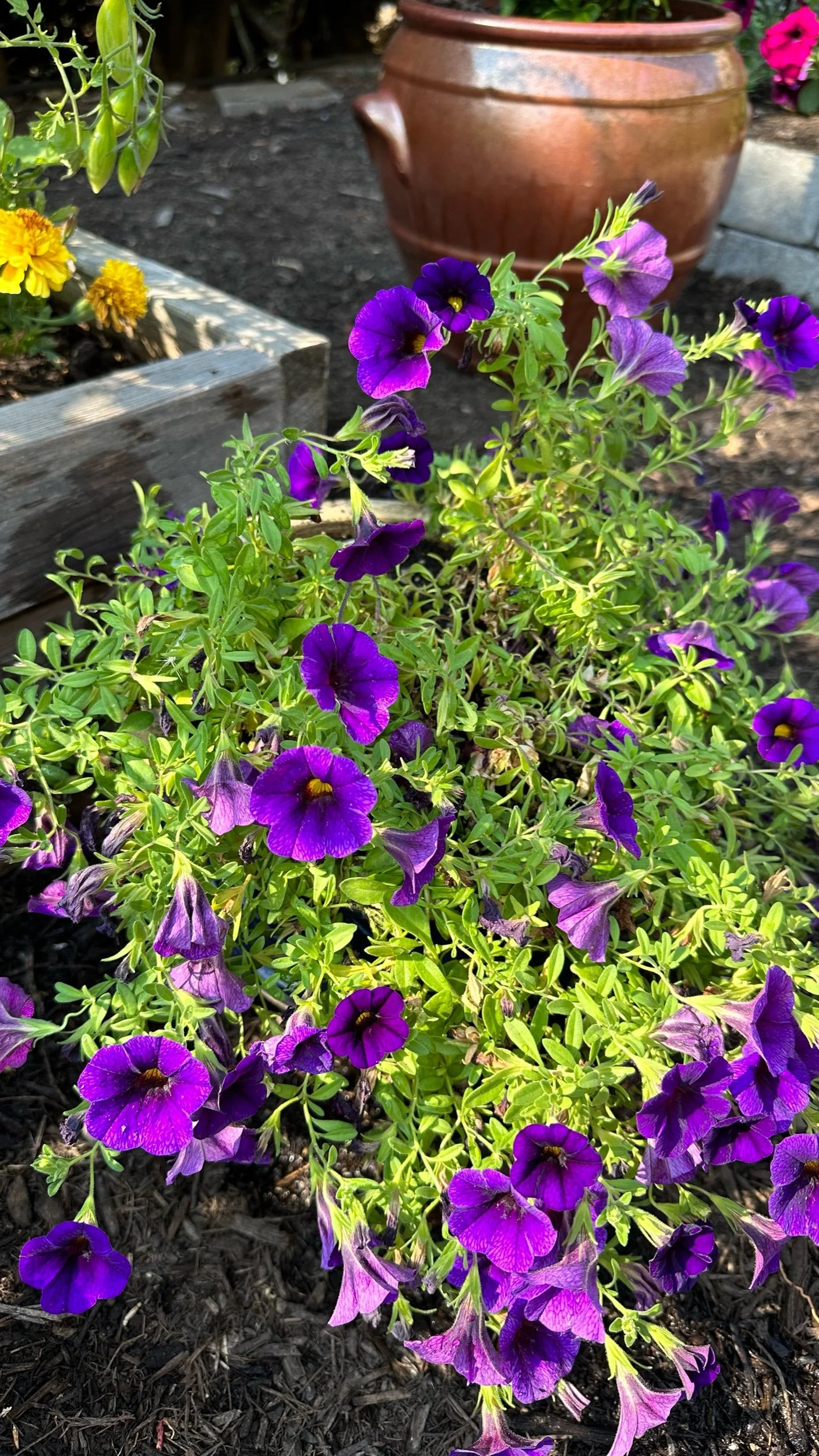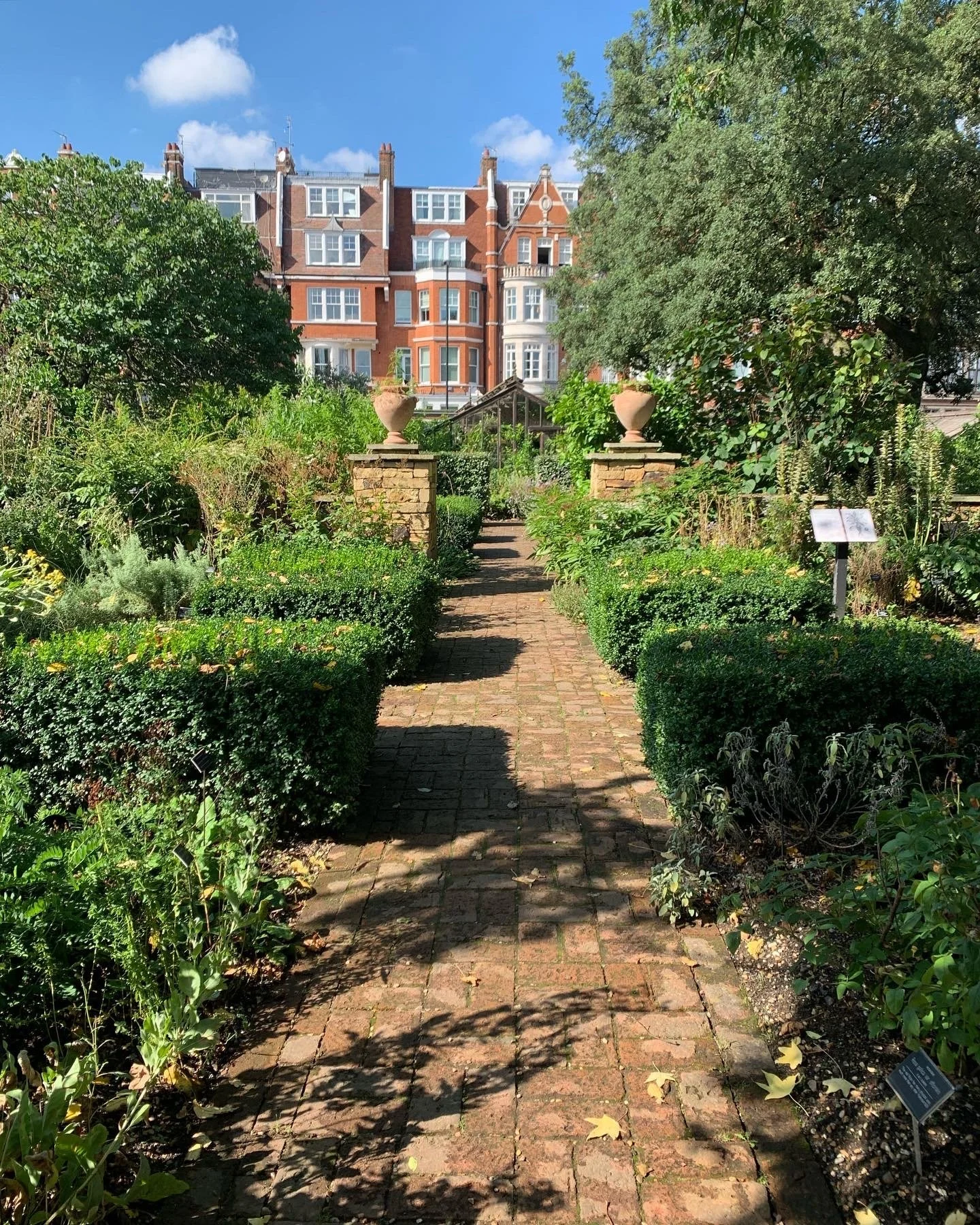The 10 Best Flowering Vines for Shade
This website is reader-supported - thank you! This post may contain affiliate links. As an Amazon Associate, I earn from qualifying purchases at no extra cost to you.
Flowering vines are a beautiful and versatile addition to any garden, adding color, texture, and interest to shaded areas.
There are many different types of shade-loving flowering vines that can thrive in the shade.
Shade-loving flowering vines add a pop of color and interest to areas that may otherwise be lackluster.
These vines can provide a beautiful contrast to the green foliage of shade-loving plants and add depth and dimension to the garden.
There are many different species and varieties of flowering vines that can thrive in full shade or partial shade, so you have a wide range of options to choose from.
Whether you prefer delicate, lacy flowers or bold, showy blooms, you are sure to find a flowering vine that suits your garden design.
Flowering vines are also great because as climbing plants they can be trained to grow on walls, fences, arbors, trellises, or other structures, adding vertical interest and helping to create a sense of depth and dimension in the garden, which can be perfect for an east facing garden.
Or they can be used to fill in bare spaces or to create a lush, green privacy screen.
Many flowering vines for shade are also highly attractive to hummingbirds, butterflies, and other pollinators, making them a valuable addition to any wildlife-friendly garden.
Shade-loving flowering vines are also often hardy and low-maintenance, as they don't require full sun and require little in the way of pruning, training, or fertilization to thrive.
Once established, they can grow and bloom in full shade or part shade with minimal attention, making them a great choice for busy gardeners or those with limited time or resources.
It is no wonder that flowering vines for shade are a popular choice.
Whether you are looking to add a pop of color, create a lush green screen, or attract wildlife to your garden, there is sure to be a flowering vine for shade that is just right for your garden.
To learn more about flowering vines, check out my guides:
Trumpet vine (Campsis radicans)
Trumpet vine (Campsis radicans) is a vigorous and fast-growing vine that produces trumpet-shaped flowers in shades of orange, red, or bright yellow.
It blooms from summer to fall, and is highly attractive to hummingbirds.
This plant is also known for its aggressive growth habit and ability to take over a garden if not properly controlled.
In fact, it is considered an invasive species in some areas, so be careful when planting it.
Despite its tendency to spread, many gardeners still love it for its showy blooms and attractive foliage.
To grow Trumpet vine successfully, it is important to provide the following preferred growing conditions:
Soil:
Trumpet vine will grow in a wide range of soils, but prefers a well-draining soil that is rich in organic matter.
It can tolerate both acidic and alkaline soils, but will perform best in a slightly acidic soil with a pH of 6.0 to 7.0.
Water:
Trumpet vine is drought-tolerant and once established, can withstand periods of dry weather.
However, it will perform best with regular watering during the growing season and will appreciate being kept consistently moist, especially during hot, dry spells.
Humidity:
Trumpet vine can tolerate both dry and humid conditions, but will perform best in a moist, well-drained soil.
Pruning:
Trumpet vine is a fast-growing plant that will quickly take over any structure it is trained to climb.
Prune it back in late winter or early spring to control its size and shape, and to encourage new growth.
Fertilizer:
Trumpet vine will benefit from an application of balanced fertilizer in the spring to support its growth and encourage abundant blooms.
Avoid over-fertilizing, as this can lead to excessive growth and fewer flowers.
USDA Hardines Zones:
4-9
For more tips and inspiration for your shade garden, check out my guides:
Hydrangea vine (Schizophragma hydrangeoides)
Hydrangea vine (Schizophragma hydrangeoides) is a hardy climbing Hydrangea that produces delicate, lacy white flowers and can be trained to climb up walls, arbors, or trellises.
This shade-loving climbing vine is prized for its delicate, lacy foliage and large, showy clusters of white flowers that bloom in mid to late summer.
Hydrangea vine is also commonly known as the Japanese Hydrangea vine and is native to Japan, China, and Korea.
The delicate, lacy foliage and abundant blooms make it a popular choice for gardens, but did you know that the name "Schizophragma" comes from the Greek words "schizo" meaning "split" and "phragma" meaning "fence"?
This refers to the shape of the plant's large, papery bracts, which look like a split fence, surrounding the clusters of tiny, delicate flowers.
To learn more about growing hydrangeas check out my guides:
Yellow Hydrangea Leaves: Fixing the Problem
The Best Companion Plants for Hydrangeas
To grow Hydrangea vine, it is important to provide the following preferred growing conditions.
Soil:
Hydrangea vine prefers a moist, well-draining soil that is rich in organic matter.
If your soil is heavy clay or poorly drained, amend it with compost or other organic matter to improve its structure and water-holding capacity.
Water:
Hydrangea vine needs regular watering to maintain its lush growth and blooms.
Water deeply and regularly, especially during periods of drought or high heat.
It is important to avoid overwatering, as this can lead to root rot.
Humidity:
Hydrangea vine prefers a humid environment and may struggle in areas with dry air.
To maintain proper humidity levels, consider misting the foliage regularly or placing a humidifier near the plant.
Pruning:
Hydrangea vine can be trained to climb up a trellis, wall, or other structure, or allowed to spill over the sides of a container or hanging basket.
Prune it regularly to maintain its shape and encourage new growth.
Fertilizer:
Hydrangea vine benefits from occasional fertilization to support its growth and bloom.
Use a balanced fertilizer every 4 to 6 weeks during the growing season, and discontinue fertilization in the fall and winter months.
USDA Hardines Zones:
5-9
For more shade garden tips, check out my guides:
Clematis (Clematis spp.)
Clematis (Clematis spp.) is a popular and versatile vine comes in a wide range of sizes and colors, with blooms that range from delicate to showy and can bloom from spring to fall.
Clematis is part of the buttercup family, which also includes plants like the ranunculus and anemone.
This family of plants is known for its brightly colored flowers and distinctive blooms, making clematis a great choice for adding color and interest to the garden.
Additionally, clematis is sometimes referred to as "the queen of the vines," thanks to its elegant blooms and the regal appearance it brings to the garden.
To learn more growing clematis, check out my guides:
Clematis for Shade: The Best Shade Tolerant Varieties
Growing Clematis in Pots: Small Space, Big Impact
To grow Clematis successfully, it is important to provide the following preferred growing conditions:
Soil:
Clematis prefers a moist, well-draining soil that is rich in organic matter.
It will grow in a range of soil types, but will perform best in a soil that is slightly acidic with a pH between 6.0 and 7.0.
Water:
Clematis requires consistent moisture to thrive, especially during the growing season.
Water deeply and regularly to ensure that the roots do not dry out, and mulch the base of the plant to help retain moisture.
Humidity:
Clematis prefers a moderate humidity level, but can tolerate a range of humidity conditions.
Pruning:
Clematis will benefit from regular pruning to promote healthy growth and encourage abundant blooms.
The type and timing of pruning will vary depending on the species and cultivar.
Fertilizer:
Clematis will benefit from regular fertilization to support its growth and blooms.
Use a balanced fertilizer in the spring, and discontinue fertilization in the fall and winter months.
USDA Hardines Zones:
4-9
Recommended Variety:
A favorite Clematis to check out is Sweet Autumn Clematis (Clematis terniflora).
A deciduous climbing vine that is known for its delicate, fragrant white flowers that bloom in large clusters in late summer and early fall.
This plant can grow quite tall, reaching heights of up to 30 feet, and it prefers full sun to partial shade.
Its fragrant blooms attract pollinators such as butterflies and bees.
The leaves are medium green and the stems are slender and flexible, making it ideal for use as a climbing or trailing plant in a variety of garden designs.
Sweet Autumn Clematis is relatively low-maintenance and is easy to care for, making it a popular choice.
It is also highly adaptable and can grow in a wide range of soil types, from well-drained to moist.
For more shady garden ideas, check out my guides:
Honeysuckle (Lonicera spp.)
Honeysuckle (Lonicera spp.) is a sweet-scented vine that produces clusters of tubular shaped flowers in shades of red, orange, yellow, or white that bloom from spring to summer, and are very attractive to hummingbirds and other pollinators.
One fun fact about honeysuckle is that it is a member of the Caprifoliaceae family, which also includes plants like the butterfly bush and elderberry.
This family of plants is known for its fragrant bright yellow flowers, making honeysuckle a great choice for adding fragrance to the garden.
Additionally, many species of honeysuckle are also known for their edible berries, which are often used to make preserves, jellies, and other treats.
In some cultures, honeysuckle is even believed to have medicinal properties and is used to treat a variety of ailments.
To grow Honeysuckle successfully, it is important to provide the following preferred growing conditions:
Soil:
Honeysuckle will grow in a wide range of soils, but prefers a well-draining soil that is rich in organic matter.
It can tolerate both acidic and alkaline soils, but will perform best in a slightly acidic soil with a pH of 6.0 to 7.0.
Water:
Honeysuckle is relatively drought-tolerant once established, but will perform best with regular watering during the growing season.
It will appreciate being kept consistently moist, especially during hot, dry spells.
Humidity:
Honeysuckle can tolerate both dry and humid conditions, but will perform best in a moist, well-drained soil.
Pruning:
Honeysuckle is a fast-growing vine that can quickly become leggy and unruly without regular pruning.
Prune it back in late winter or early spring to control its size and shape, and to encourage new growth.
Fertilizer:
Honeysuckle will benefit from an application of balanced fertilizer in the spring to support its growth and encourage abundant blooms.
Avoid over-fertilizing, as this can lead to excessive growth and fewer flowers.
USDA Hardines Zones:
4-9
For more tips, check out my guides:
Boston ivy (Parthenocissus tricuspidata)
Boston ivy (Parthenocissus tricuspidata) is a fast-growing and hardy vine that produces clusters of small, green flowers in spring, followed by glossy green leaves that turn red in fall.
Boston Ivy is well-known for its ability to climb and attach itself to surfaces using adhesive pads on its tendrils.
This makes it a popular choice for covering walls, fences, and trellises in the garden.
To grow Boston Ivy successfully, it is important to provide the following preferred growing conditions:
Soil:
Boston Ivy is relatively tolerant of soil types, but prefers a well-draining soil that is rich in organic matter.
It can tolerate a range of soil pH, but will perform best in a slightly acidic to neutral soil with a pH between 6.0 and 7.0.
Water:
Boston Ivy requires consistent moisture to thrive, especially during the growing season.
Water deeply and regularly to ensure that the roots do not dry out, and mulch the base of the plant to help retain moisture.
Humidity:
Boston Ivy can tolerate a range of humidity conditions, but will perform best in a moist, well-draining soil.
Pruning:
Boston Ivy does not typically require pruning, but can be cut back to control its size and shape if necessary.
Prune it back in late winter or early spring before new growth begins.
Fertilizer:
Boston Ivy will benefit from an application of balanced fertilizer in the spring to support its growth and encourage abundant foliage.
Avoid over-fertilizing, as this can lead to excessive growth and poor foliage quality.
USDA Hardines Zones:
4-8
Chinese Wisteria (Wisteria sinensis)
Chinese Wisteria (Wisteria sinensis) is a beautiful flowering vine that is prized for its long clusters of fragrant, purple or white flowers that bloom in the spring or early summer.
Chinese Wisteria makes a good flowering vine for shade because it can tolerate some light shade, making it a good option for areas of the garden that receive less light.
It is also relatively low-maintenance and can grow in a range of soil types.
This plant is known for its stunning cascading blooms that can grow up to 20 feet in length.
Also, check out my guide to Every Type of Wisteria and How to Choose the Right One.
To grow Chinese Wisteria successfully, it is important to provide the following preferred growing conditions:
Soil:
Chinese Wisteria prefers well-draining soil that is rich in organic matter, but will grow in a range of soil types.
It can tolerate a range of soil pH, but will perform best in a slightly acidic to neutral soil with a pH between 6.0 and 7.0.
Water:
Chinese Wisteria requires consistent moisture to thrive, especially during the growing season.
Water deeply and regularly to ensure that the roots do not dry out, and mulch the base of the plant to help retain moisture.
Humidity:
Chinese Wisteria can tolerate a range of humidity conditions, but will perform best in a moist, well-draining soil.
Pruning:
Chinese Wisteria requires regular pruning to control its size and shape, and to promote healthy growth and abundant blooms.
Prune it back in late winter or early spring before new growth begins.
Support:
Chinese Wisteria requires a sturdy support system, such as a trellis or pergola, to climb and grow.
Train it to grow on its support system as soon as possible, tying it to the support as needed.
USDA Hardines Zones:
5-9
Star Jasmine (Trachelospermum jasminoides)
Star Jasmine (Trachelospermum jasminoides) is a popular flowering vine that is prized for its fragrant, white or yellowish-white flowers that bloom in the spring or early summer.
Star Jasmine is a relatively low-maintenance and can grow in a range of soil types.
In addition, its fragrant blooms add a lovely scent to the garden and its evergreen foliage provides year-round interest.
To grow Star Jasmine successfully, it is important to provide the following preferred growing conditions:
Soil:
Star Jasmine prefers well-draining soil that is rich in organic matter, but will grow in a range of soil types.
It can tolerate a range of soil pH, but will perform best in a slightly acidic to neutral soil with a pH between 6.0 and 7.0.
Water:
Star Jasmine requires consistent moisture to thrive, especially during the growing season.
Water deeply and regularly to ensure that the roots do not dry out, and mulch the base of the plant to help retain moisture.
Humidity:
Star Jasmine can tolerate a range of humidity conditions, but will perform best in a moist, well-draining soil.
Pruning:
Star Jasmine requires minimal pruning, but can benefit from regular pruning to control its size and shape, and to promote healthy growth and abundant blooms.
Prune it back in late winter or early spring before new growth begins.
Support:
Star Jasmine requires a sturdy support system, such as a trellis or pergola, to climb and grow.
Train it to grow on its support system as soon as possible, tying it to the support as needed.
USDA Hardines Zones:
8-10
Wild Potato Vine (Solanum jasminoides)
Wild Potato Vine (Solanum jasminoides), also known as Potato Vine or Nightshade Vine, is a flowering vine that is prized for its fragrant white or blue flowers and green foliage.
Wild Potato Vine is a member of the morning glory family, Convolvulaceae.
This family of plants is known for its twining growth habit, making Wild Potato Vine a great choice for adding vertical interest to the garden.
To grow Wild Potato Vine successfully, it is important to provide the following preferred growing conditions:
Soil:
Wild Potato Vine is relatively tolerant of soil types, but prefers a well-draining soil that is rich in organic matter.
It can tolerate a range of soil pH, but will perform best in a slightly acidic to neutral soil with a pH between 6.0 and 7.0.
Water:
Wild Potato Vine requires consistent moisture to thrive, especially during the growing season.
Water deeply and regularly to ensure that the roots do not dry out, and mulch the base of the plant to help retain moisture.
Humidity:
Wild Potato Vine can tolerate a range of humidity conditions, but will perform best in a moist, well-draining soil.
Pruning:
Wild Potato Vine does not typically require pruning, but can be cut back to control its size and shape if necessary.
Prune it back in late winter or early spring before new growth begins.
Fertilizer:
Wild Potato Vine will benefit from an application of balanced fertilizer in the spring to support its growth and encourage abundant blooms.
Avoid over-fertilizing, as this can lead to excessive growth and fewer flowers.
USDA Hardines Zones:
5-9
Chocolate Vine (Akebia quinata)
Chocolate Vine (Akebia quinata) is a deciduous, woody climbing vine that is prized for its fragrant, chocolate-scented blooms and attractive, five-lobed leaves.
It is a good choice for shady areas of the garden, and its woody growth habit and attractive leaves make it a good option for climbers, arbors, and trellises.
The plant produces clusters of small, purple flowers and is native to Asia.
In Japan, the plant is known as "Kokage," meaning "shaded by leaves."
To grow Chocolate Vine successfully, it is important to provide the following preferred growing conditions:
Soil:
Chocolate Vine prefers moist, well-drained soil that is rich in organic matter, but will grow in a range of soil types.
It can tolerate a range of soil pH, but will perform best in a slightly acidic to neutral soil with a pH between 6.0 and 7.0.
Water:
Chocolate Vine requires consistent moisture to thrive, especially during the growing season.
Water deeply and regularly to ensure that the roots do not dry out, and mulch the base of the plant to help retain moisture.
Humidity:
Chocolate Vine can tolerate a range of humidity conditions, but will perform best in a moist, well-drained soil.
Pruning:
Chocolate Vine requires minimal pruning, but can benefit from regular pruning to control its size and shape, and to promote healthy growth and abundant blooms.
Prune it back in late winter or early spring before new growth begins.
Support:
Chocolate Vine requires a sturdy support system, such as a trellis or pergola, to climb and grow.
Train it to grow on its support system as soon as possible, tying it to the support as needed.
Pests and Diseases:
Chocolate Vine is relatively disease-resistant, but can be susceptible to pests like aphids and scale insects.
Regularly inspect the plant and treat any pests with an appropriate insecticide if necessary.
USDA Hardines Zones:
4-9
Dutchman's pipe (Aristolochia durior)
Dutchman's pipe (Aristolochia durior) is a hardy and striking vine that produces distinctive, pipe-shaped flowers in shades of green, yellow, or brown that bloom from spring to summer.
Dutchman's pipe is a host plant for the Pipevine Swallowtail butterfly.
The caterpillar of this butterfly feeds exclusively on the leaves of the Dutchman's pipe, and the adult butterfly is attracted to the nectar-rich flowers.
By planting Dutchman's pipe in your garden, you can provide a food source for these beautiful butterflies and help support their populations.
Additionally, the Pipevine Swallowtail is known for its striking black and blue coloring, making it a popular sight in the garden for both its larvae and adult stages.
To grow Dutchman's Pipe successfully, it is important to provide the following preferred growing conditions:
Soil:
Dutchman's Pipe is relatively tolerant of soil types, but prefers a well-draining soil that is rich in organic matter.
It can tolerate a range of soil pH, but will perform best in a slightly acidic to neutral soil with a pH between 6.0 and 7.0.
Water:
Dutchman's Pipe requires consistent moisture to thrive, especially during the growing season.
Water deeply and regularly to ensure that the roots do not dry out, and mulch the base of the plant to help retain moisture.
Humidity:
Dutchman's Pipe can tolerate a range of humidity conditions, but will perform best in a moist, well-draining soil.
Pruning:
Dutchman's Pipe does not typically require pruning, but can be cut back to control its size and shape if necessary.
Prune it back in late winter or early spring before new growth begins.
Fertilizer:
Dutchman's Pipe will benefit from an application of balanced fertilizer in the spring to support its growth and encourage abundant blooms.
Avoid over-fertilizing, as this can lead to excessive growth and fewer flowers.
USDA Hardines Zones:
4-8
